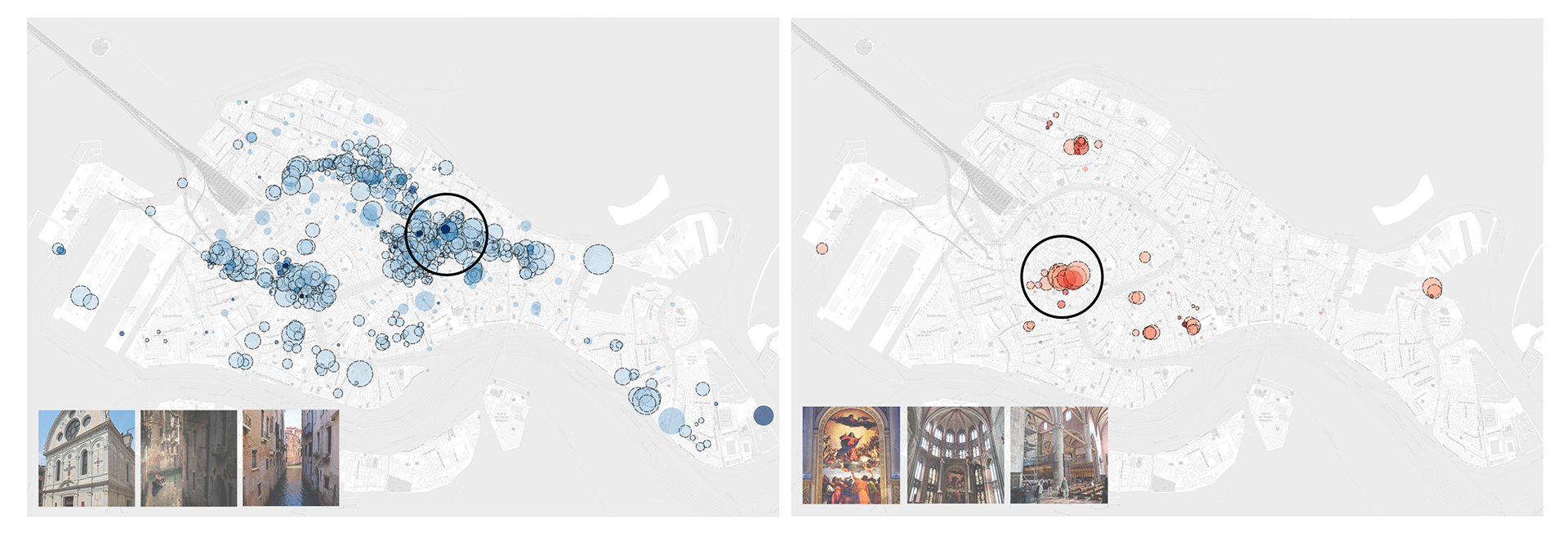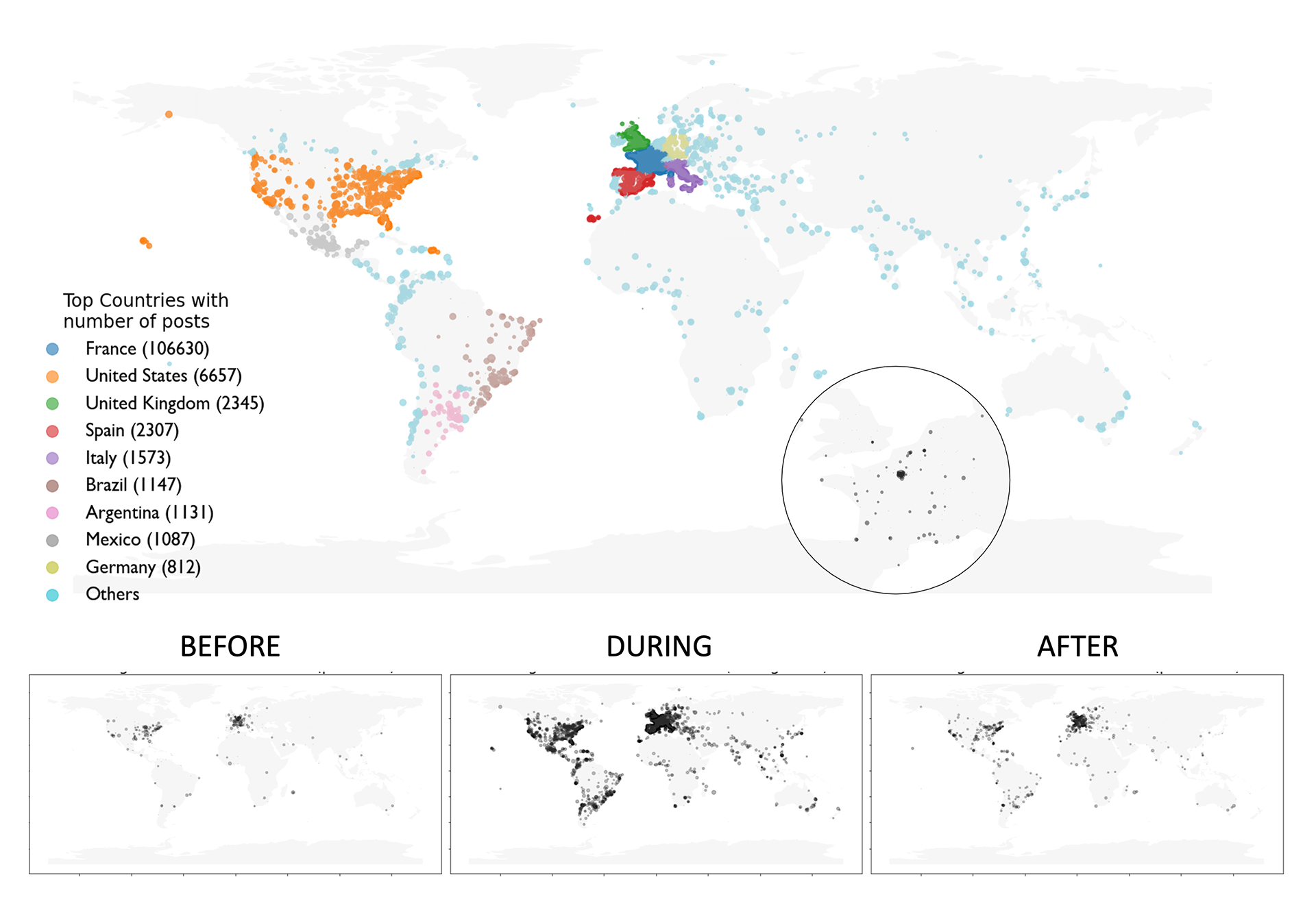Tourists usually seem to have vastly different opinions to share with their fellow travellers, even when viewing the same piece of urban heritage at the same time. It was this observation which sparked the curiosity of PhD candidate Nan Bai. During his six-month Bachelor exchange in Germany, he visited 55 European cities. While traveling, he enjoyed listening to the diverse comments of people in almost every place he visited. He wondered why that would be and what it means for heritage preservation. "I strive to engage the broader public in the discussion around heritage," he said.
Originally from Tsinghua, China, Nan pursued two simultaneous bachelor degrees, in Architecture and Psychology. During this time he gravitated towards statistics and the foundational mathematics required for programming. He continued his architectural studies with Masters in China and Germany. During his studies in Germany, he used his free time to complement his developing interests by getting involved in the MSc Heritage Conservation program. He also discovered AI, a subject he continued to explore while preparing for his PhD journey. Nan: “I felt that skills and knowledge related to AI would be necessary for research at large scales and across multiple locations.”
Evaluating heritage in the social media age
Nan’s overarching goal is studying people’s perception and behaviour within the built environment. He became an advocate for inclusive decision-making on heritage and historic value by considering the opinions of ordinary individuals. Nan: “I aim to include the broader public on the discussion around heritage. Experts have their own limitations. Taking a broad diversity of perspectives into account means decisions made will respect the interests of a larger part of society.”
I aim to include the broader public on the discussion around heritage.
Nan applied in Delft for a project on analysing social media reactions to help social inclusion in heritage. He distinguished two distinct scenarios. The ‘baseline’ scenario uses social media to map people's perceptions of urban heritage under normal circumstances. The ‘activated’ scenario delves into changes on social media during crises. Nan’s final proposed framework comprises three modules. One specialises in text analysis, one in image recognition, and a third fuses their output to form a coherent picture.
‘Baseline’ or ‘activated’ response to urban heritage
For the baseline scenario, Nan first categorized people's perception concerning cultural significance. He arrived at two types: 'outstanding universal value’ or OUV (factors like demonstrating masterpiece, testimony, building typology, and cultural interactions) and 'heritage attributes' (what exactly is being valued as heritage? Is it an entire monument, decorative elements, a certain area?). Each category gets a dedicated map showing the location of its related social media posts. The model was tested on Venice, where Nan's research revealed that tourists actually explore all sorts of unconventional locations. Their posts contribute extensively to social media discussions on heritage. Nan: “Thanks to my studies, I have learned about many spots in Venice that I need to visit!”
In his baseline analysis of Venice, Nan’s model shows among others the location of social media posts relating to the OUV ‘masterpiece’ (left) and the heritage attribute ‘interior scenery’ (right). The black circles highlight areas of specific interest, the Campo Santa Maria Nuova and the Basilica di Santa Maria Gloriasa dei Friari respectively.
In the activated scenario, Nan's model maps how social media posts evolve during events such as the Venice flooding or the Notre Dame fire. The objective is to have the model decipher various aspects of posts such as emotions, the intensity of responses, and the geographical spreading. The data are then aggregated onto maps and two-week timelines to provide an overview of global heritage crises. One notable result of Nan’s model is the public criticism towards Venice’s flood protection programme during the floods of 2019. “Not really fair criticism, since the programme was not yet operational.”
The analysis of public response to the Notre Dame fire yielded, among others, these maps of the global distribution of activated Twitter discussions relating to the cathedral.
Will an AI ever understand what ‘heritage’ means?
Nan aspires to expand his research to different cities. He has already validated the model's effectiveness in Amsterdam: a detailed analysis of the city is pending. Nan envisions making his models open access, allowing everyone to create maps based on their values and interests. “The definition of heritage can change. Through these tools, we can for example demonstrate and even somewhat quantify the value of urban heritage to many facets of society, avoiding the loss of value due to overzealous destruction or renovation works.” As he fine-tunes his model, he anticipates what advances in technology and robust data repositories might lead to. “Maybe, in the near future, these neural networks will develop some form of knowledge of cultural significance and urban heritage.”
More information
On 5 October 2023, Nan Bai defends his thesis ‘Sensing the Cultural Significance with AI for Social Inclusion’. Nan’s PhD is part of a larger EU-funded project, Heriland. The project comprises fifteen PhD candidates across six countries, all working to promote social inclusion in urban heritage.



